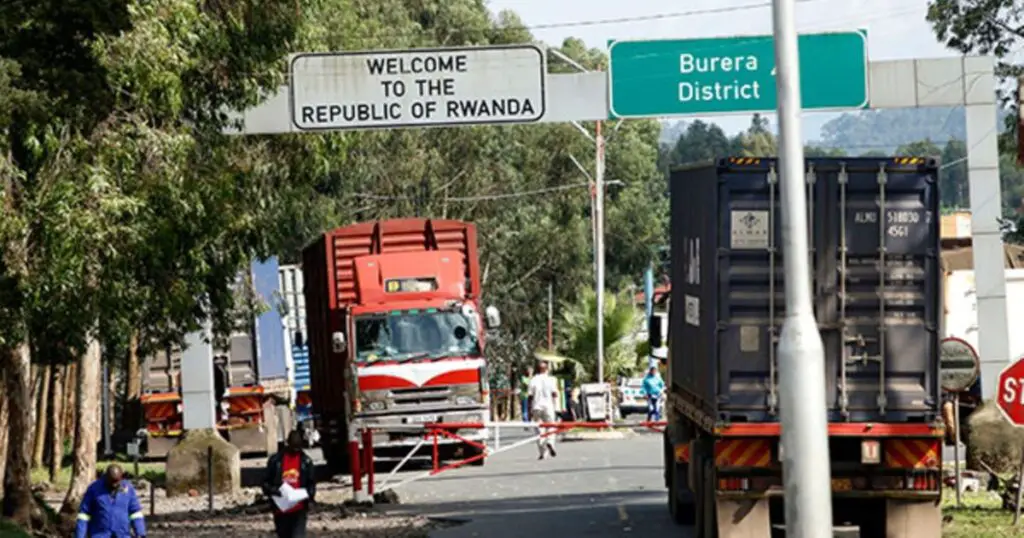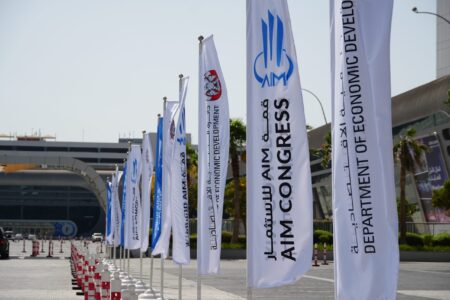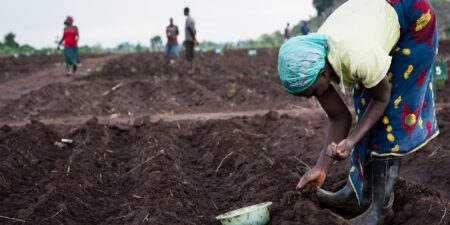- Standard Bank has developed the Africa Trade Barometer, a tool that blends qualitative and quantitative data across African markets.
- The Africa Trade Barometer is instrumental in solving access to information, a significant non-tariff barrier in Africa.
- It provides a near real-time view of trade openness, access to finance, and macroeconomic stability data among others.
Standard Bank, the biggest lender by assets across Africa, has thrown its weight behind the African Continental Free Trade Area (AfCFTA) saying it is a key opportunity to alleviate poverty, drive economic activity and achieve prosperity.
By eliminating trade barriers, AfCFTA aims to lift about 30 million Africans out of poverty by increasing incomes across the continent by seven percent by 2035. Once implemented, AfCFTA will be the world’s largest free trade area ever rolled out.
Standard Bank wants to power AfCFTA take-off
Recent global supply chain woes suffered in Africa illustrate the urgent need of building domestic value chains. The need for Africa to better integrate into regional and global supply ecosystems cannot be overemphasized.
Standard Bank is optimistic about the benefits of a single market across the continent of 1.2 billion people. The lender wants to harness its broad networks and expertise on-the-ground to power AfCFTA’s take-off.
“Standard Bank is building the finance and trade solutions to help address the tariff and non-tariff barriers required to realize the continent’s ambitions to create an effective single market,” said Philip Myburgh, Head of Trade for Business and Commercial Banking at Standard Bank.
Myburgh adds that Standard Bank is dedicated to promoting growth and creating opportunities across the 20 markets it serves. The lender supports Africa-centric solutions and encourages the private sector to contribute more to the health of local and regional economies.
Part of the initiatives Standard Bank has developed include the Africa Trade Barometer. This is a tool that blends qualitative and quantitative data from, initially, 10 of Africa’s leading economies. The Africa Trade Barometer will be instrumental in providing information, which is a significant non-tariff barrier across Africa.
The tool provides a near real-time view of trade openness, access to finance, and macro-economic stability. What more, policymakers will be getting information on infrastructure, foreign trade, and governance. Africa Trade Barometer also offers data on economic performance, and trade finance behaviour in Africa.
AfCFTA is pinned on free trade among African countries
For example, in Kenya, the Africa Trade Barometer found that 40 percent of firms hope for AfCFTA is pinned on free trade among African countries, with the spin off on increased business volume and home-grown industries development.
Read also: AfCFTA crucial for Africa’s economic recovery and growth
The report also found that AfCFTA presents a significant opportunity for accessing new markets. Therefore, there is a need to position countries to take advantage of the opportunities by focusing on value addition. One of the target industry is agri-processing since agriculture is a major sector for economies such as Kenya.
Beyond aligning legislation and reducing red-tape, a more conducive environment for trade in Africa will include developing manufacturing capabilities in order to boost earnings. This includes the ability to construct rail, road and port infrastructure required to move goods across vast territories.
Beyond hard infrastructure, access to trade finance remains a challenge. While banks are important players in financing trade across the continent, perennial risks continue to limit commercial credit appetite.
“In this environment, leveraging the ability of Africa’s financial institutions to deploy capital from development finance institutions and sovereigns into effective trade finance, especially for entities that have not yet built up their credit standing, could dramatically expand intra-African trade,” said Myburgh.
Agriculture is greatest employer
Other areas where banks and the private sector could work with the AfCFTA to begin implementation in 2023, is to identify and then co-operate on leveraging growth in high-potential sectors, the lender notes.
“In Africa, for example, agriculture is the bedrock, biggest earner, and greatest employer in many markets. Starting with small steps to improve the movement of food and agricultural goods, inputs, services and people could have a disproportionally large positive impact on social stability, growth, investment and national revenue across the continent,” said Myburgh.
Energy and power infrastructure is another area where even limited cross-border co-operation and coordinated national investment could have a disproportionally high impact on regional and continental growth.
Free trade or special economic zones have also, to date, proved their worth as drivers of investment, production, and export earnings amongst African economies.
Importantly for Africa, and critically for the AfCFTA vision of a single African market, the continent’s booming digital ability, supported by a youthful population, presents another avenue for Standard Bank to provide the finance, guidance and digital platforms and connectivity to grow Africa’s digital revolution into a global investment proposition, notes Myburgh.
Standard Bank has developed Africa Trade Barometer
A significant non-tariff barrier in Africa is access to information. In response, Standard Bank has developed the Africa Trade Barometer, which blends qualitative and quantitative data. The tool’s initial coverage has critical information from 10 of Africa’s leading trade economies. It provides a near real-time view of trade data helping policymakers, governments and well as other stakeholders to make decisions.
“The secret to Africa’s success will be the power of partnerships, awareness of what is needed and access to trusted information, as no one can do it alone. The AfCFTA Business Forum is the perfect opportunity to get these partnerships off the ground and working to breathe life into the move to a single market,” says Myburgh.
It is therefore important countries use the opportunity to accelerate moves to a practical cross-border framework on which to build the institutions, systems and practices capable of uniting Africa’s business potential into a continental force for growth, the continental lender noted.
Meanwhile, AfCFTA Rules of Origin (RoO) covering 88.3 percent of tariff lines have been agreed upon. According to the East African Business Council (EABC) , the Rules of Origin will promote the ‘Made in Africa’ campaign.”
“They should be flexible, predictable, and simple for SMEs to trade in the 1.2 billion AfCFTA market,” EABC executive director and CEO John Bosco Kalisa said.
Integrate agro-processing value chains
“Rules of Origin should integrate continental value chains of agro-processing, automotive, textiles, pharmaceuticals, and transport and logistics to boost intra-Africa trade,” said Kalisa added.
As of February this year, 46 countries had deposited their instruments of ratification of the AfCFTA Agreement. Up to 36 tariff offers, including three Customs Unions (EAC, ECOWAS, and CEMAC), have been technically verified. Equally, rules of origin covering the 88.3 percent of tariff lines agreed upon.
Rules of Origin are rules and regulations that determine the “economic nationality” of a product. They are expected to attract more Foreign Direct Investments. Further, they offer opportunities for SMEs to engage in regional value chains. Rules of origin provide preferential market access and reduce cost of doing business through self-certification exporters. In the end, this will foster economic transformation of the continent through industrialization.











